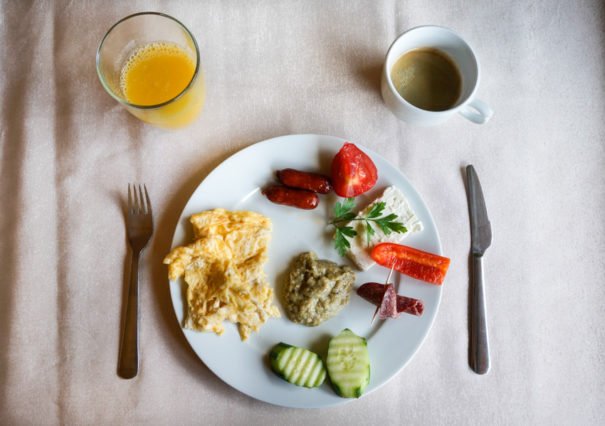
The Many Traditions of the Traditional Romanian Breakfast

The Many Traditions of the Traditional Romanian Breakfast
Telemea in Romania
As we say in Romania, love comes from the heart, but passes through the stomach. But more so than that, for a born and bred Romanian, hearty home-cooked food is a way of life. It is for me, despite having lived abroad for the past 11 years. I still crave my grandmother’s ciorbă (a sour soup consisting of vegetables and meat), her poale-n brâu (small pies) and sarmale (cabbage rolls filled with rice and meat).
Thanks to a rich, diverse cuisine, largely stemming from centuries old traditions, there isn’t any one typical Romanian breakfast. This varies from one region to the next, especially when comparing rural to urban areas.
The Holy Grail to Romanian food, mamaliga—or polenta, as it’s known in the West—is often served for breakfast in the countryside, where people still eat traditionally. However, most Romanians today skip this breakfast and have it as a side dish instead. In urban areas, pastries and pies are a more modern, on-the-go breakfast, anything from merdenele (pastries with cheese) to covrigi (the hot-off-the-oven, crisp Romanian pretzels; I’ll take two, please).
There is common ground, however, thanks to the unique confluence of cultures that history brought to Romania, including Hungarian, Slavic, Turkish and Greek influences. We are Balkan yet Latin, speaking a romance language in a hotbed of Russian and Slavic neighbors.
Across the nation, we all agree on a spread of bread, butter, and jam served alongside a healthy portion of eggs. Now add to that vegetables—tomatoes, cucumbers and peppers—and an assortment of mezeluri (cold cuts) such as parizer (similar to mortadella), ham, and salam de Sibiu (Sibiu salami made of pork).
But to further Romania-fy this breakfast, a few additional ingredients are mandatory. Turkish-style coffee, compliments of centuries of strife under sporadic Ottoman rule; eggplant salad, similar to baba ganoush, an undisputed Romanian cuisine staple; and telemea made out of cow or sheep’s milk, similar to the Greek feta cheese, only more pungent. Accompanying the plate, almost always, are fried smoked sausages, a spicy extra bite that complements the rest.
And luckily for us, in a country that is still predominantly rural, where farmers tend to their livestock and ride horse-and-buggies carrying hay, enjoying these items straight from the garden is still a reality.